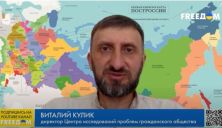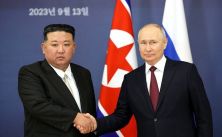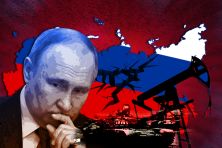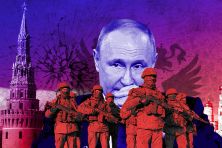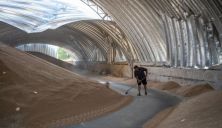Each repetition of the blackout at the Zaporizhzhia Nuclear Power Plant (ZNPP) in the city of Energodar, which remains under Russian occupation for the second year, threatens with serious consequences. After all, blackouts occur due to the destruction of the existing power line in the absence of auxiliary or backup ones. Nuclear energy expert, Doctor of Sciences Ludwig Litvinsky said this live on the FREEDOM TV channel.
“Following the regulations, the power supply of a nuclear power plant must have one main line and at least two reserve lines. This condition has not been observed at the Zaporizhzhia station site for a long time. As a result of the actions of the Russian army, the main and, God forbid, one of the reserve power supply lines usually remains there. That is why every repetition of a blackout, that is, the destruction of the main operating line in the absence of auxiliary or backup ones, is a threat of serious consequences,” he noted.
Litvinsky recalled that the blackout that occurred the day before was not the first at the station during its occupation. At Zaporizhzhia NPP, measures are provided for such cases – diesel generators for each power unit, as well as general station ones. However, their resources are not endless.
“After each shutdown of external power supply, this resource is exhausted. And the fuel reserve actually won’t accumulate much. This could be for several days, even 10 days, no more. Therefore, the threat is constantly supported by the Russian side and, unfortunately, has persisted for, say, a year and a half,” the guest of the broadcast noted.
In addition, as the expert explains, a station that does not generate energy “sucks up” the Ukrainian energy system, because it is the station that provides external energy supply to the station.
“They consume a little less than 200 megawatts in power for the simple reason that we cannot allow the pumps that ensure the movement of the coolant and cool the core of the cooling pools and other power unit systems to stop to ensure safety,” explained the guest on the broadcast.
As for the power units themselves, according to Litvinsky, they are all in a state of shutdown, that is, no atomic fission reaction occurs in the reactors. However, the Russian occupiers, in violation of the decision of the national regulatory authority, do not keep all six power units in a cold shutdown state, and a hot shutdown poses a danger.
“The greatest troubles can come from those power units that are maintained in a hot shutdown state, since at any moment in a few hours these units can be brought to the minimum significant power, and as a result, the production of radionuclides will begin,” he explained.
The expert is sure that the constant preservation of the threat at the station is one of the goals of the Russian Federation.
“Under the decision of the national regulatory authority, all power units must be placed in a cold shutdown state. But this decision is not implemented, since what happens at the Zaporizhzhia station is determined by the Russian authorities and Russian specialists present there. That is why this threat persists. And, in my opinion, this is one of the goals of the Russian side: the constant preservation of a threat both to Ukraine and to the entire world community,” summed up Ludwig Litvinsky.
As previously reported, on the night of December 2, a complete blackout occurred at the occupied Zaporizhzhia nuclear power plant. The night before, the 330 kV power transmission line “Zaporizhzhia Thermal Power Plant – Ferrosplavna”, through which the station received power from the Ukrainian energy system, broke down. And already at 2:31, during an air raid, the last line “Zaporizhzhia NPP – Dneprovska” with a voltage of 750 kV was de-energized.



